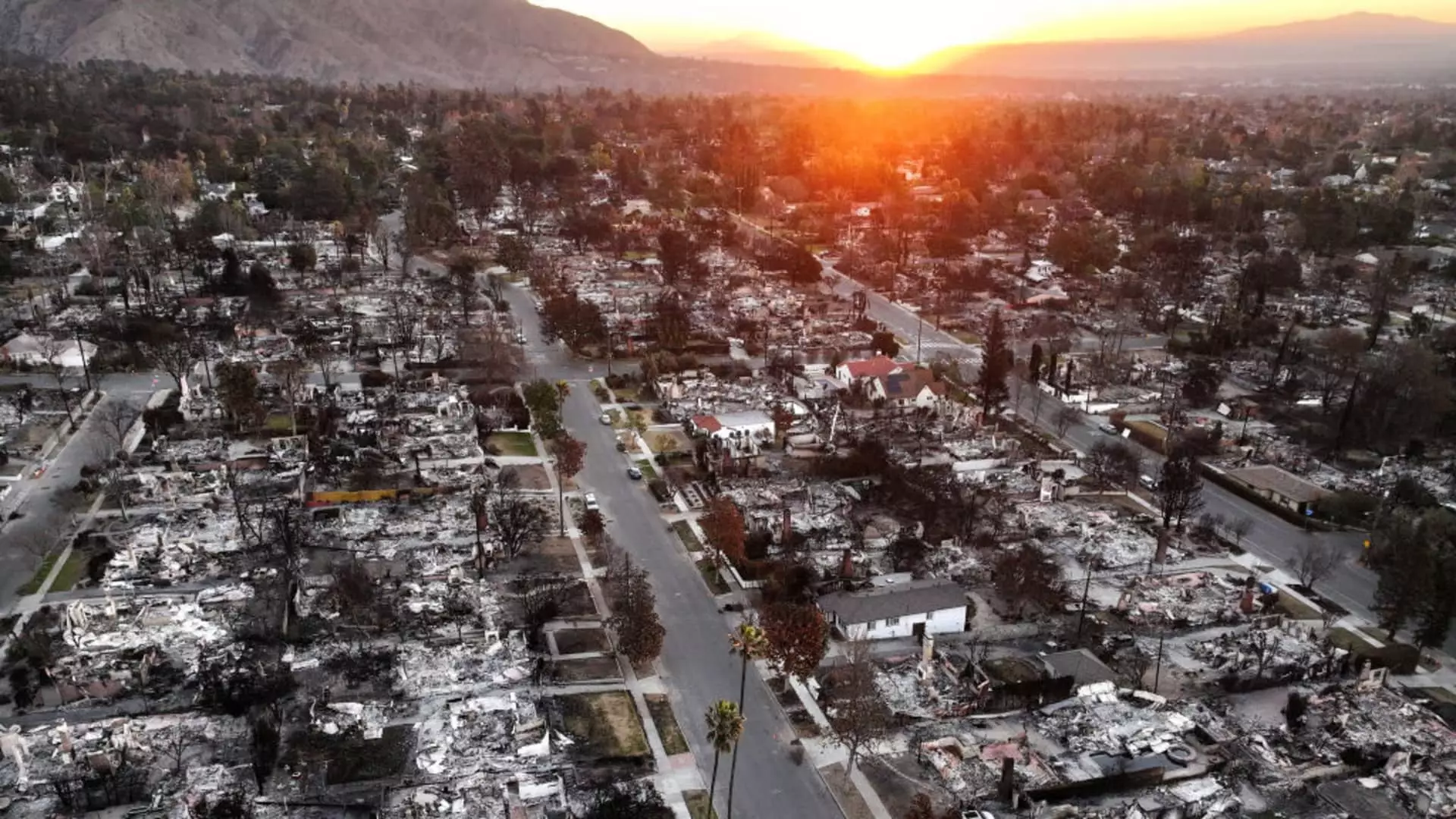The Pacific Palisades, an area renowned for its breathtaking views and serene environment, has recently become emblematic of the devastating impact of wildfires. Amidst the ashes lies the home of Dr. Damon Raskin, who, like many families in the area, has faced the emotional turmoil of losing a home to flames that ravaged his neighborhood. Rather than succumbing to despair, Dr. Raskin and his family chose to confront their loss with determination, expressing their desire to rebuild. This sentiment reflects a broader response among the thousands of residents affected by the disaster, showcasing a combination of grief and resilience that will be crucial as the community grapples with a long and arduous recovery process.
In the wake of such disasters, the challenge of rebuilding extends beyond mere physical construction. It encompasses a complex web of emotional, logistical, and regulatory hurdles that families and communities must navigate. With over 12,000 structures damaged or destroyed, totaling an astounding estimated cost of $40 billion, such recovery efforts represent not only a restoration of homes but also a significant undertaking for California’s homebuilding industry and state agencies.
Tom Grable, a leader in the homebuilding sector, provided insight into the complexities of reconstruction efforts. He emphasized that while reconstructing homes might be perceived as straightforward, the extensive cleanup process poses a monumental challenge. The devastation left behind includes hazardous debris and decimated landscapes, requiring a coordinated and comprehensive approach to restore sites to a buildable state. In an attempt to streamline recovery, California Governor Gavin Newsom and Los Angeles Mayor Karen Bass have enacted executive orders to expedite the necessary regulatory processes. This assistance is crucial in helping communities to navigate the bureaucratic red tape often associated with rebuilding after such catastrophic events.
Of course, rebuilding isn’t just about the physical structures; it’s also about adopting strategies intended to mitigate future risks. The historical requirements for fire-resistant materials, which weren’t applicable to homes erected prior to the new regulations, must be addressed. Dr. Raskin recognizes the importance of sourcing fire-resistant lumber and innovative materials to safeguard against future fires—a proactive measure that illustrates a shifting paradigm in construction standards following widespread calamities. Such infrastructure modifications are part of a broader effort to ensure that homes are not only rebuilt but reinforced against nature’s unpredictability.
In this critical juncture, the role of the homebuilding industry will be pivotal. Big names in the market, such as KB Home and Tri Pointe, are poised to contribute to the reconstruction efforts, though they primarily focus on larger multi-home developments rather than individual houses in affected neighborhoods. Some local builders may find these circumstances advantageous, given their specialized experience with custom homes in historically affluent areas like Pacific Palisades, providing a nuanced understanding of what the community requires.
However, the rebuilding climate is complex, and the current trend of increased demand for materials could strain supply chains. Following previous disasters, California’s contractors have become adept at using fire-resistant components. Despite this, the potential introduction of tariffs on lumber from Canada might exacerbate existing challenges, with price increases likely impacting homeowners directly.
One of the most daunting aspects of this rebuilding journey involves navigating the insurance landscape, which has become increasingly strained in California due to the frequency of natural disasters. As many insurance providers retract from the market and others tighten their policies, homeowners face difficulties in securing adequate coverage. For Dr. Raskin, reliance on the California FAIR Plan—a safety net for those unable to find traditional coverage—becomes essential, although it raises the risk of insufficient funds to fully cover losses.
Even as the Raskins manage the claims process, the uncertainty of subsequent expenses looms large. They are renting temporary accommodations while awaiting their new home, knowing that reconstruction could span multiple years. This reflection of their circumstances serves as a microcosm of the broader anxiety shared by countless other families in Los Angeles.
The stark reality for families like the Raskins is that the transition from destruction to recovery is fraught with challenges. However, their resolve to rebuild symbolizes hope and the possibility of renewal in the face of overwhelming adversity. Through collaboration among homeowners, builders, and policymakers, the potential exists to not only restore what was lost but to create communities that are more resilient to future catastrophes. As the arduous recovery unfolds, it is clear that what emerges from the ashes of the Pacific Palisades will be dictated not just by the standards of building codes but also by the human spirit’s unyielding strength.

